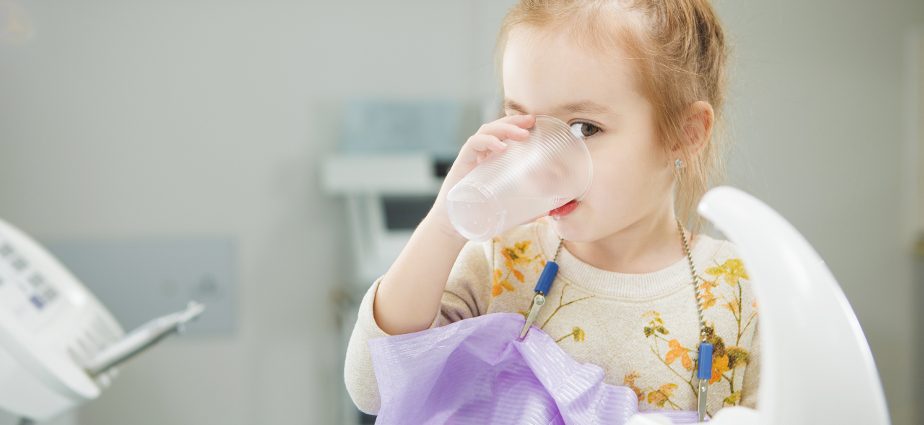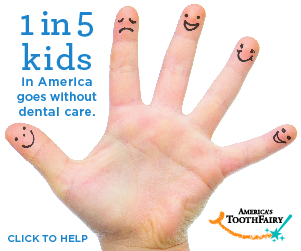Oral Rinses for Children

As any parent will tell you, it’s easier to get kids to do what’s best for them if you make it fun and engaging. If the process involves something that tastes good, even better. This rationale served as the basis for developing oral rinses specifically for children, intending to get them to start and maintain good and consistent oral hygiene habits for healthy teeth.
Specifically addressing parents’ concern for safety while also appealing to children’s sensibilities, oral rinses for children ages six years and older fall into the following general categories, although there may be some overlap:
- Pre-brush
- Post-brush
- Anti-cavity fluoride
- Natural
Oral rinses typically are not recommended for children under six years of age, since there is a risk that they will swallow the rinse instead of spitting it out. Oral rinses are not meant to be swallowed, since the active ingredients can be harmful when ingested. If your child is under six years of age, consult with your dentist or doctor before giving your child any kind of oral rinse.
Unlike many adult therapeutic oral rinses, oral rinses for children do not contain prescription ingredients or concentrations. Antimicrobial rinses with ingredients such as chlorhexidine gluconate are not recommended for children under the age of 18, since their clinical effectiveness and safety have not been determined for this age group.
Pre-Brush Children’s Oral Rinses
Pre-brush oral rinses for children tint the teeth – typically a blue color – so your child can pay special attention to areas that need to be brushed thoroughly. Gentle enough for daily use, pre-brush oral rinses are recommended for use immediately before brushing in the morning and evening.
Pre-brush oral rinses are not formulated to prevent or reduce plaque or gingivitis. Their purpose is to make teeth brushing an enjoyable activity for children, helping them clean their teeth better and for the right amount of time. By making the process fun, pre-brush oral rinses reinforce positive behavior while giving children a sense of accomplishment for brushing their teeth well.
Ongoing and continued use of pre-brush rinses may not be necessary once children establish healthy and consistent teeth brushing habits.
Post-Brush Children’s Oral Rinses
Post-brush oral rinses for children help prevent cavities, kill germs that cause bad breath (halitosis) and protect teeth against plaque formation and stains. They should be used twice daily after brushing and flossing.
Although children eventually should be able to determine when they’ve thoroughly brushed their teeth – therefore eliminating the need for a pre-brush rinse, it is possible that their oral hygiene regimen consist of a pre-brush rinse, teeth brushing and flossing, and post-brush rinse – the latter being necessary for cavity prevention.
Anti-Cavity Children’s Oral Rinses
Anti-cavity fluoride rinses are recommended for children six years old and older who are still perfecting proper oral hygiene habits. Most post-brush rinses are anti-cavity fluoride formulations to help protect teeth and gums.
Natural Oral Rinses
Pre-brush and post-brush rinses for children do not typically contain alcohol or sugar. However, some do contain chemicals, artificial sweeteners and coloring agents. If you are seeking milder and more natural alternatives to most over-the-counter (OTC) oral rinses for children, there are various natural brands available for children. The ingredients in natural oral rinses may include pleasant-tasting, breath-freshening herbs and xylitol, a natural sugar substitute derived from birch tree pulp that has been clinically proven to help fight cavities and protect teeth from dental plaque.
Benefits of Children’s Oral Rinses
Some pediatric dentists recommend oral rinses for children as an adjunct to pediatric dental care. The regular use of post-brush anti-cavity fluoride oral rinses has been clinically proven to help reduce cavities up to 40 percent more than brushing alone. Alcohol- and sugar-free formulations make pre-brush and post-brush oral rinses a safe and healthy means of introducing younger children to the idea and practice of gargling and spitting.
There are other benefits of children’s oral rinses, including the following:
- The beneficial properties of some oral rinses are delivered throughout the mouth, which compensates for a child’s lack of dexterity or inability to reach all areas of their mouth via brushing alone.
- Oral rinses are especially good for children who wear braces, because the rinse can treat hard-to-reach areas of the mouth that a toothbrush or floss can’t.
- Some post-brush oral rinses for children have a magnetizing effect, attracting and tinting the food particles and germs that brushing alone may leave behind. When your child spits the particles out, there is visual proof left in the sink of a thorough cleaning.
- An anti-cavity fluoride post-brush rinse will help fortify and protect against enamel wear and chipping. Some cavity-fighting oral rinses also are effective in preventing and reversing white spots (decalcification spots) on teeth, which are common in children who wear braces.
- Some oral rinses soothe mouth irritations.
Special Features of Oral Rinses for Children
Apart from child safety caps and tamper-resistant bands on the caps, many oral rinses for children feature pre-measured dispensers to ensure that children are using the recommended amount.
Some manufacturers of children’s pre-brush and post-brush oral rinses offer educational tools such as interactive, child-friendly websites with fun facts, games and trivia quizzes, as well as parent incentives that include product coupons and college savings fund programs. Others offer free dental screenings and education events/programs through schools and youth groups in order to teach proper oral hygiene and provide free dental care products to instill good habits.
Product Availability and Cost
Oral rinses for children come in child-friendly flavors such as bubble gum, cinnamon, berry and peppermint/orange twist.
Children’s oral rinse products are sold at supermarkets, drug stores and mass retailers nationwide. Their average cost is approximately $4 or $5.
The most popular kinds of children’s oral rinses contain fluoride for cavity prevention. Among these, the Oral-B Anti-Cavity Rinse and ACT for Kids have earned the American Dental Association (ADA) Seal of Acceptance. Listerine, Dr. Fresh and Vi-Jon are other popular brands that offer pre-brush and post-brush oral rinses for children.
Getting Started with Children’s Oral Rinses
Consult your child’s dentist and pediatrician before giving your child any type of oral rinse. Supervision is recommended when your child is rinsing to prevent swallowing. In case of an overdose, seek professional help immediately.
Buy only mouth rinses that come with child-resistant caps. Carefully read the manufacturer’s label for precautions, age recommendations and dosage and frequency instructions. If your child has any allergies or sensitivities to certain ingredients, check for these as well.
When teaching your child how to rinse for the first time, explain the oral rinsing process so your child will know what to expect. For example, when first using a pre-brush tint rinse, tell your child that it alters the color of the teeth and not to get worried or scared. Explain that it’s only a temporary change to show where the plaque is “hidden” for easy removal.
Rinse right alongside your child the first few times (at least) a pre-brush or post-brush oral rinse is being used for reassurance and to demonstrate how to rinse properly.
Then, keep up to date on the latest developments in the children’s oral rinse categories, including new product introductions, possible side effects or allergy sensitivities and product recalls. In consultation with your child’s dentist and doctor, “graduate” your child to different oral rinse products in conjunction with changes in dexterity, maturity level and oral health needs.
Safety Precautions
If you use an adult oral rinse containing alcohol, consider switching to one without alcohol. If your oral health condition or personal preference causes you to continue to use an OTC rinse with alcohol or a therapeutic rinse with prescription-strength ingredients and/or concentrations, keep it safely out of your child’s reach to avoid possible accidental use or misuse by your child. For a child weighing 26 pounds, five to 10 ounces of many OTC oral rinses with alcohol can be potentially lethal.
Be careful to note possible signs of alcohol or fluoride toxicity. Signs of an alcohol overdose are irritability, severe low blood sugar levels (hypoglycemia) resulting from the rapid absorption of sugar by the alcohol in the bloodstream, unconsciousness, unresponsiveness and convulsions. Symptoms of a fluoride overdose can include shallow breathing, nausea, vomiting, diarrhea, stomach pain, shock, tremors and convulsions. If your child shows signs of any of these symptoms, contact a poison control center or seek professional emergency care immediately.
Importance of Regular Dental Checkups
Children’s pre-brush and post-brush oral rinses are intended for ages six and older to complement, not replace, brushing and flossing efforts. It is important that everyone – children and example-setting adults – brush their teeth twice a day and floss once daily, as well as visit their dentist regularly.
Children should visit the dentist every six months. As part of a comprehensive strategy for fostering a lifetime of good oral health habits, regular checkups will help your child’s dentist evaluate and update oral rinse recommendations.![]()
Next, go to:



